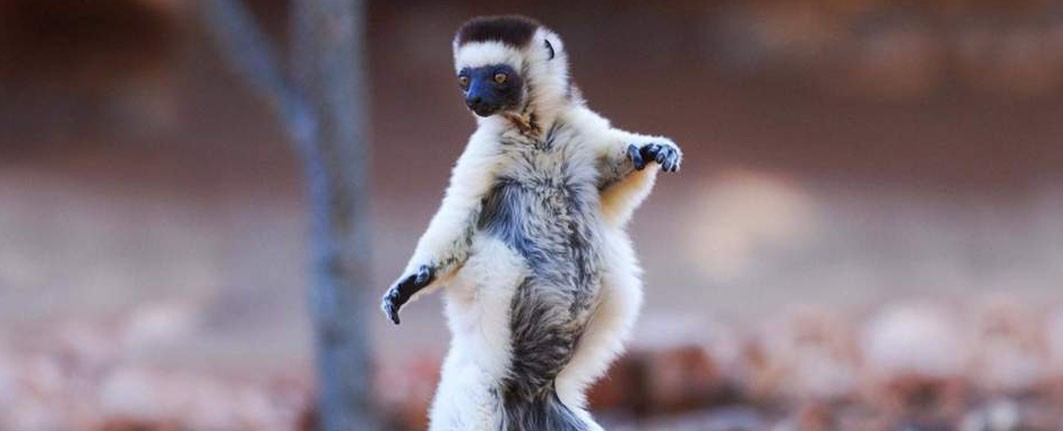
Sifakas are among the biggest, best-known, and most engaging of the island’s lemurs. Seeing all nine species is something of an accomplishment for lemur-watchers, as the species are scattered all around the island, and some of them are very rare and local. Although all species are similar in diet and behaviour, the sifakas in the eastern rainforest tend to live at lower densities, in smaller groups with larger home ranges.
DISTRIBUTION: Spiny forest and other kinds of dry forest in the southwest.
ID: A large, mostly white lemur with a dark brown crown. Occasionally shows dark grey on limbs and back. Unmistakable within its range.
VOICE: The harsh “see-fak” alarm call gives this group of animals its common name.
BEHAVIOUR: Found in groups from 2–14, averaging 5–6. They move through trees by making often-spectacular leaps, and sometimes also along the the the ground with an extraordinary ‘dancing’ motion. The diet consists of leaves, fruit, and flowers. The single young is born in July or August.
WHERE TO SEE: This is one of the lemurs for which Berenty is famous, and that is where most dancing lemur’ photos have been taken. Also easy to find in Kirindy Forest, and occurs in Zombitse and Isalo NPs, although it can be more elusive in those parks.
Despite jumping powerfully between octopus trees in the spiny forest, Verreaux’s Sifakas seem to avoid damage to their hands and feet.
HT AGENCY TOURS
Luxury Madagascar with the best luxury African safari tours packages. Discover your next perfect destination with HT Agency Tours

